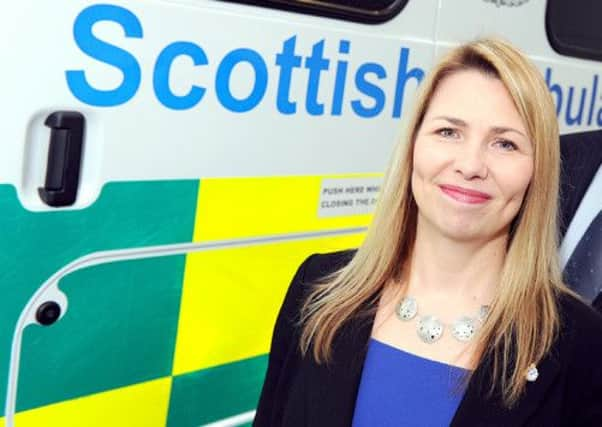Elderly fall victims boost demand for ambulances


The Scottish Ambulance Service (SAS) said that last year they attended 33,604 calls to deal with falls – an increase of 7.1 per cent from the previous year.
The details emerged as the service, which yesterday held its annual review, missed most targets related to reaching patients as quickly as possible.
Advertisement
Hide AdAdvertisement
Hide AdDespite emergency calls increasing by 1.5 per cent in 2012-13 – meaning staff attended more than 600,000 incidents – average response times fell to 6.5 minutes, compared to 6.7 minutes the previous year.
The rapidly ageing population, with people living longer but not always in good health, has increased demand across the health service, with concerns raised about Scottish hospitals’ capacity to cope with more elderly patients needing care.
The service’s figures showed that in 2012/13, ambulances responded to 74.7 per cent of life-threatening calls within eight minutes, narrowly missing the target of 75 per cent.
But David Garbutt, chair of the SAS, told the meeting in Glasgow that so far this financial year, the service had achieved a performance of 75.2 per cent.
The service narrowly missed a target to get to 80 per cent of cardiac arrest patients within eight minutes, performing at 79.1 per cent. But despite this, ambulance crews saved the lives of 523 heart patients last year – up from around 400 three years ago. The average response time for cardiac calls was six minutes.
Pauline Howie, chief executive of the SAS, said rising demand, fuelled in part by the ageing population, contributed to targets being narrowly missed. “We are getting busier every year in the accident and emergency service and that happens mainly in the out-of-hours period as well. That is when people tend to need us most,” she said.
“What we are doing is trying to realign our shifts to have more people working out-of-hours, but the demand during the day is still there.”
Ms Howie said falls by the elderly was the most common reason people called for an ambulance. “It is certainly an area where we have seen an increase in activity this year,” she said. “We are working with local authorities to try to put in alternative arrangements to deal with people who have fallen but were not injured, so may not need to go to hospital.
Advertisement
Hide AdAdvertisement
Hide Ad“That can involve ‘falls teams’ coming out and assessing that person more quickly than they are able to do at the moment. That is better for the person and saves us taking them to accident and emergency departments.”
As well as the ageing population, demand is continuing to be driven by alcohol problems, which Ms Howie said were at “a worryingly high level”.
She said the service was now working with Police Scotland to deal with alcohol-related calls at weekends, Christmas and New Year, where 68 per cent of calls can relate to such incidents.
Michael Matheson, Scotland’s public health minister, said: “There is a demographic shift that has taken place with an ageing population that does place greater demand on some parts of the service.”
“That is why it is important that the ambulance service is an integrated part of the NHS and social care system, so the planning and delivery of services at a local level take account of how they can best manage that with the ambulance service as well.”